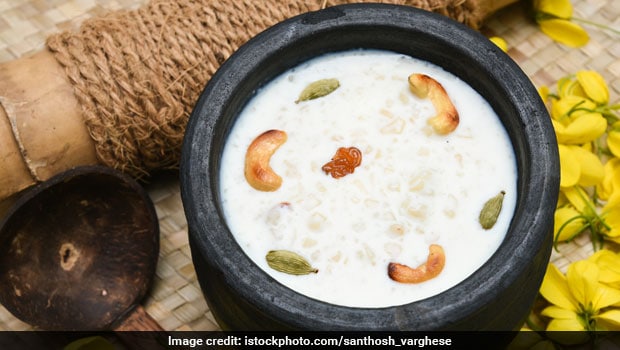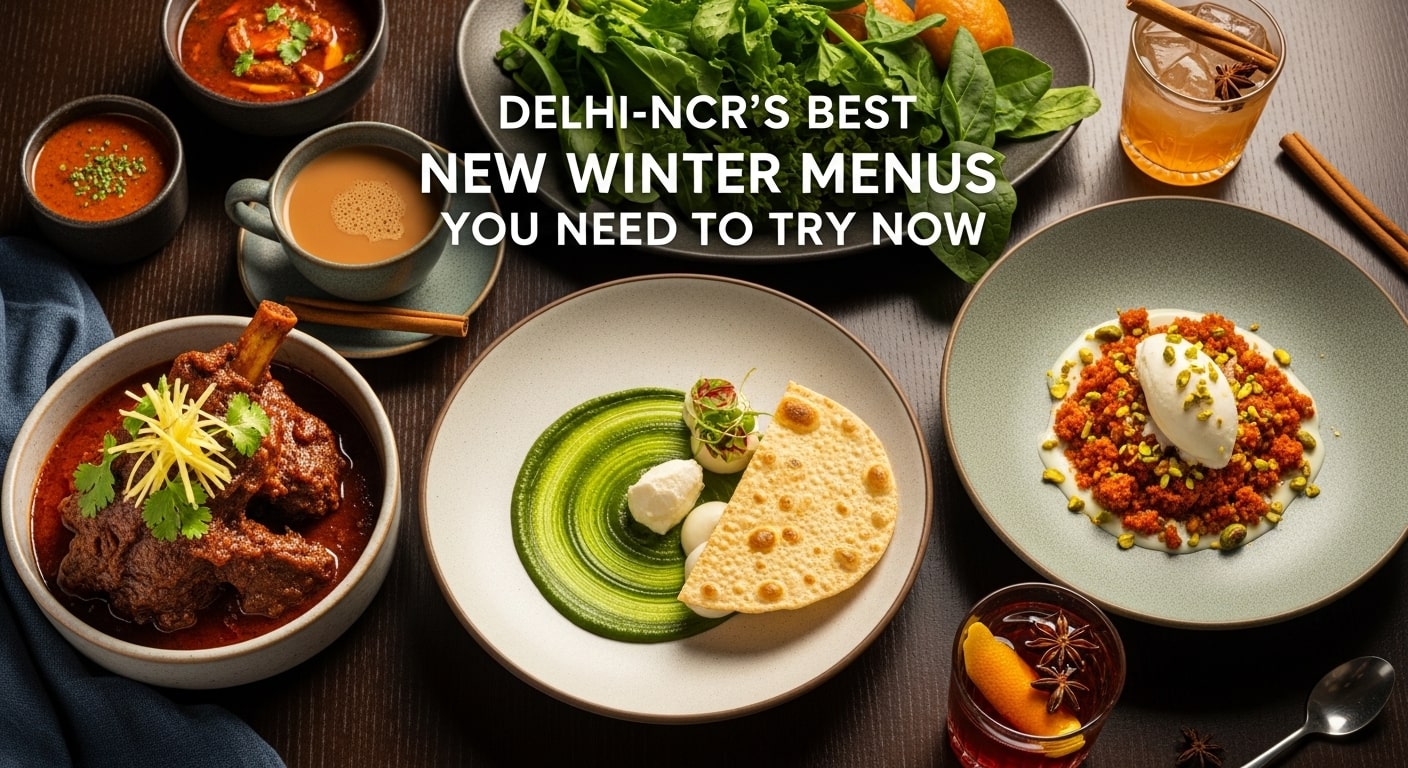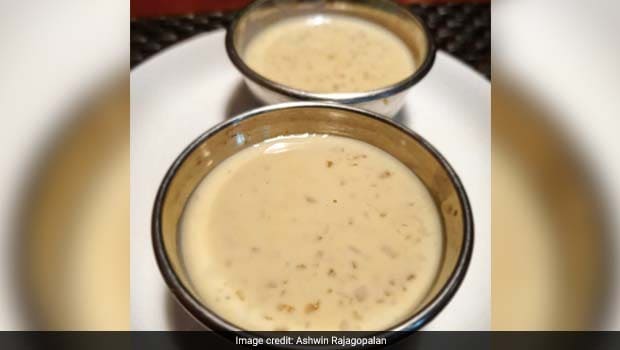Almost each time I've enjoyed a wedding sadya (feast) in Central Kerala, especially around Thrissur and Palakkad, I always hear fellow diners spend a lot of time dissecting the sambar and the payasam. It's almost an unwritten rule, the quality of these wedding feasts or any sadya is judged in these parts on the basis of the sambar and the payasam. It doesn't matter that there are close to 20 dishes that make up a typical sadya.
Being a self-confessed dessertarian, I like the fact that the sweet ending to a wedding feast gets a lot of attention. One of the most popular payasams (or kheer) in Kerala is the Palada Payasam. It might appear like a simple dessert to craft but requires oodles of passion and discipline in equal measure. This is not a dish that involves assembling multiple ingredients and finding the balance but just comprises three essential ingredients - milk, sugar and ada or rice flakes.
Not long ago, the ada (rice flakes) used to be made at home but most homes don't have the time or energy for this laborious process anymore opting instead for products you can pick off the shelf in a supermarket. You should be able to also find this product on online platforms in case you can't locate it in your local supermarket.
(Also Read: 5 Best Payasam Recipes | Easy Payasam Recipes | Kheer Recipes)

Not long ago, the ada (rice flakes) used to be made at home
The other key ingredient is milk - the thicker the milk the better. It's fairly common now to add condensed milk for that extra thickness and a creamy texture but old-timers will tell you that nothing beats milk. It's not unusual to see cashews (fried in ghee) or raisins added to a palada payasam but the classic version doesn't feature any add-ons and is just about the thickness of the milk as it keeps getting reduced over a low flame. I was always fascinated by the colour of this payasam. A classic milk kheer in most parts of India is a creamy white. Not the palada payasam. It gradually transforms into a light pink, sometimes pale brown hue thanks to the slow-cooking style. Nothing beats the wedding version that is cooked in large brass vessels over a wood fire.
You can't replicate the wood fire and the flavours it imparts to this payasam at home. In fact, many wedding cooks have been forced to ditch wood-fired stoves as stronger local laws have kicked in. A few months ago I was at Malabar Cafe, the all-day diner at the Grand Hyatt Kochi Bolgatty that focuses on traditional home-style recipes from all over Kerala. I enjoyed their authentic version of the Palada Payasam - yes, it passed that pink colour test. The traditional palada payasam is quite sweet - it's not for you if you don't enjoy very sweet desserts. You could reduce the amount of sugar in this recipe if you'd prefer a more mellow sweetness. The key to making a good palada payasam is the time you spend stirring this over a low to medium flame and that's where most people stumble. There's no shortcut to a good palada payasam, most of those food critics at weddings in Kerala will probably agree with me.
Recipe - Palada Payasam
Recipe Courtesy - Chef Aswini Gopalakrishnan,
Sous Chef-Malabar Cafe, Grand Hyatt Kochi Bolgatty
Ingredients
-Ada (Rice flakes) - 100 gm
-Milk - 1 litre
-Water - 200 ml
-Sugar - 200 gm
-Cardamom powder - a pinch
Method of Preparation
-Wash ada, drain out and keep it aside.
-Heat a wide pan/traditional uruli and pour water and allow it to boil.
-Now pour the thick milk, stir continuously and allow to boil.
-Stir for around 10-15 minutes, then add rice ada into it.
-Allow the ada to cook, stir occasionally. Maintain a medium flame.
-When ada is cooked well, add sugar, combine well.
-Caramelise 20 gm of sugar and add in to attain the light pink colour.
-Stir cardamom powder, serve warm.
So go ahead, and try this amazing palada payasam recipe at home.
Disclaimer:
The opinions expressed within this article are the personal opinions of the author. NDTV is not responsible for the accuracy, completeness, suitability, or validity of any information on this article. All information is provided on an as-is basis. The information, facts or opinions appearing in the article do not reflect the views of NDTV and NDTV does not assume any responsibility or liability for the same.
About Ashwin RajagopalanI am the proverbial slashie - a content architect, writer, speaker and cultural intelligence coach. School lunch boxes are usually the beginning of our culinary discoveries.That curiosity hasn’t waned. It’s only got stronger as I’ve explored culinary cultures, street food and fine dining restaurants across the world. I’ve discovered cultures and destinations through culinary motifs. I am equally passionate about writing on consumer tech and travel.











